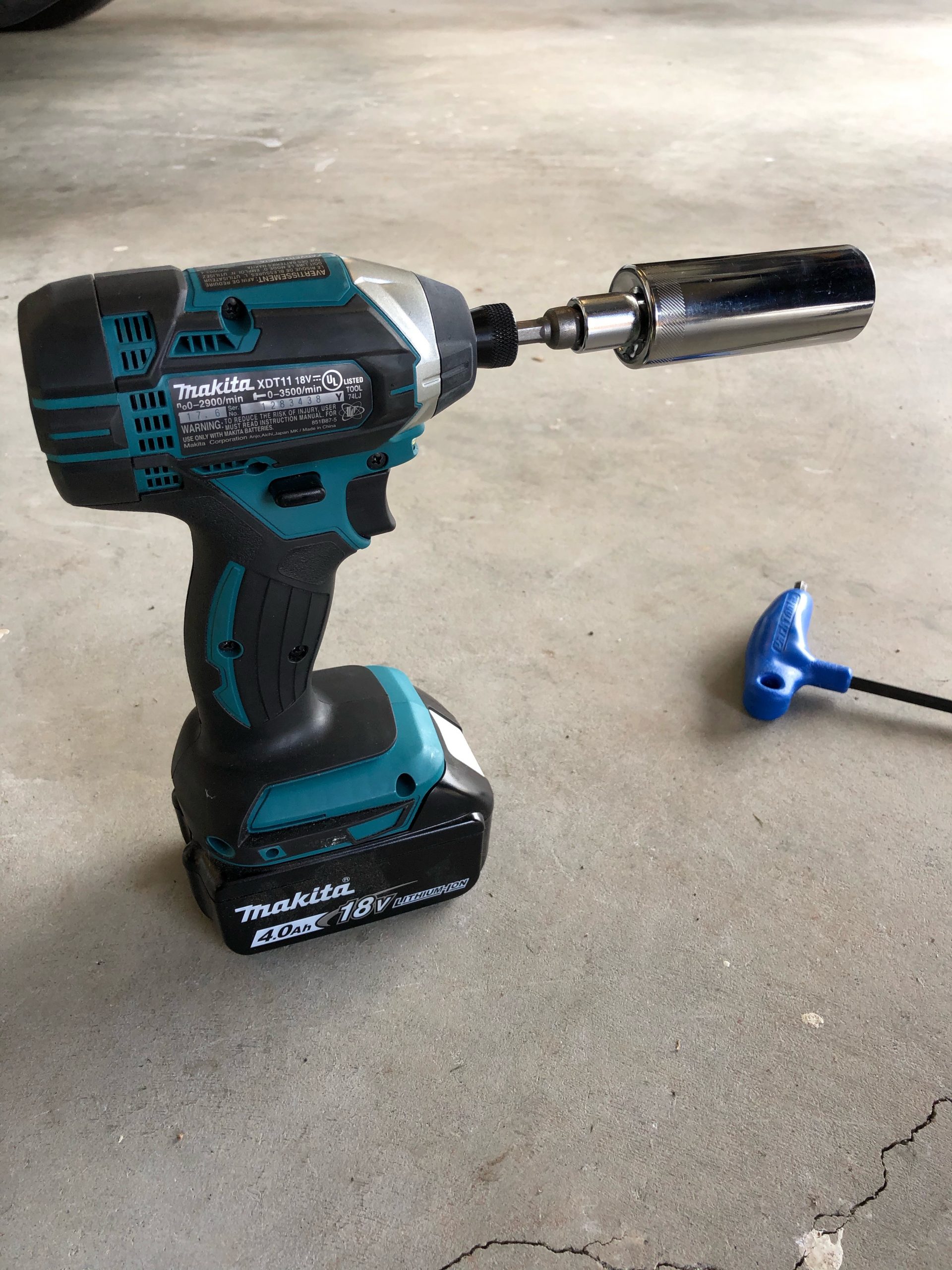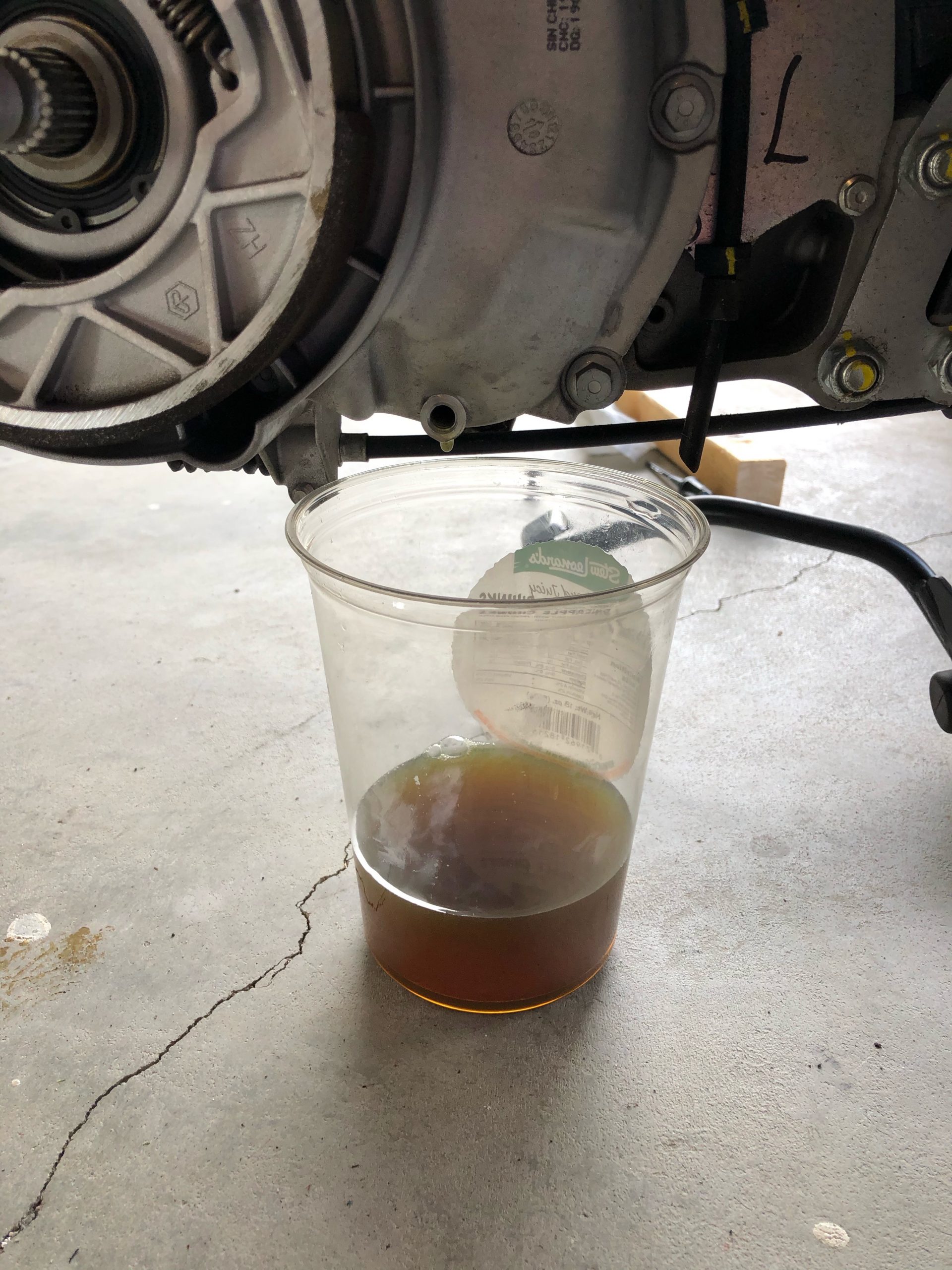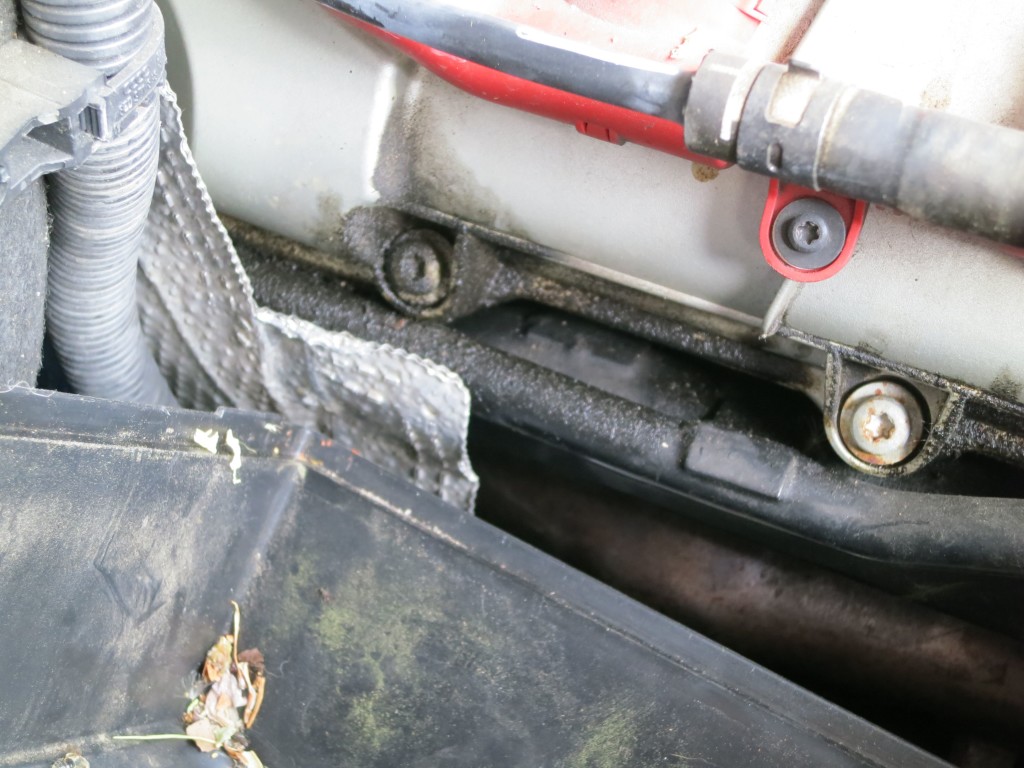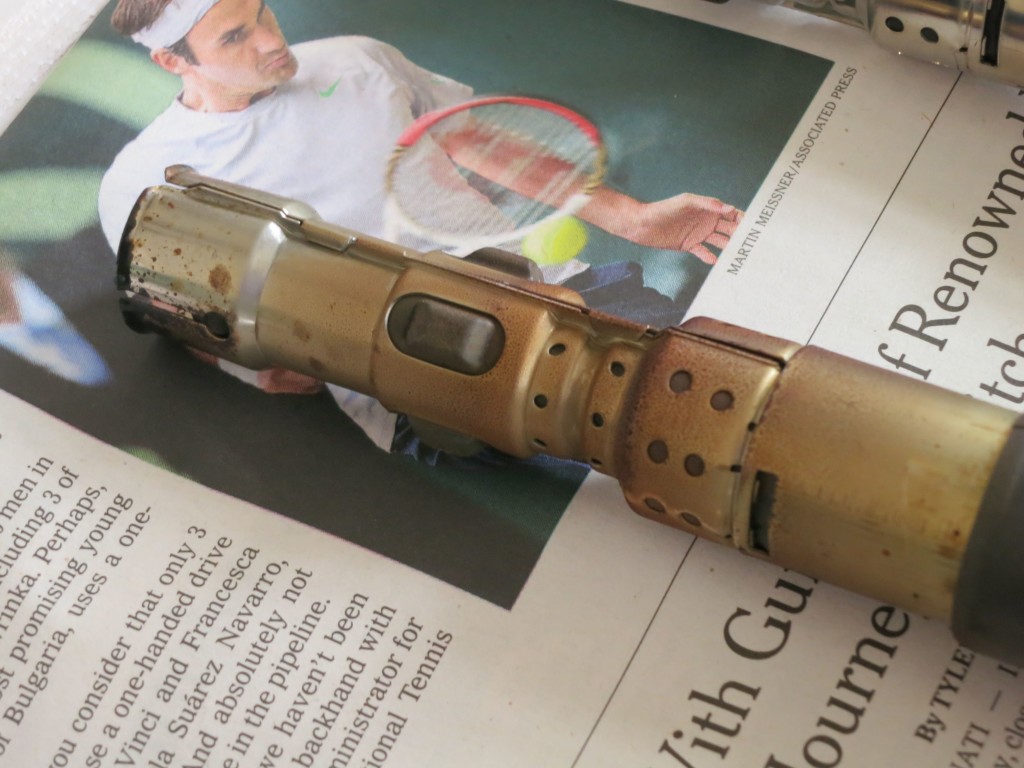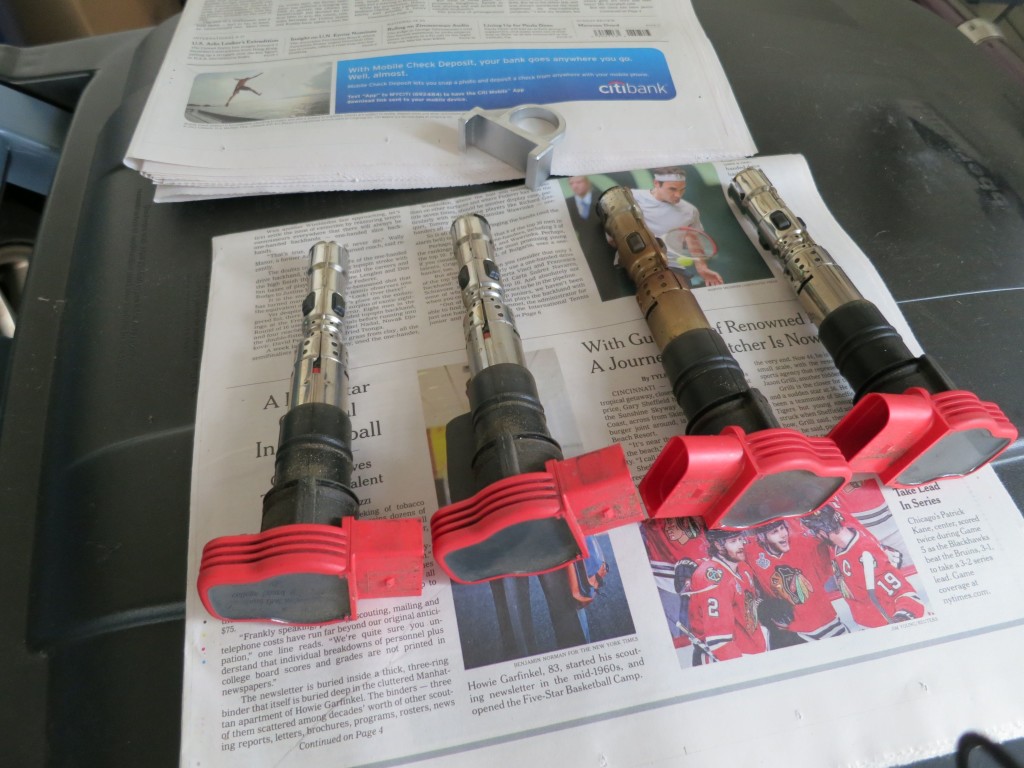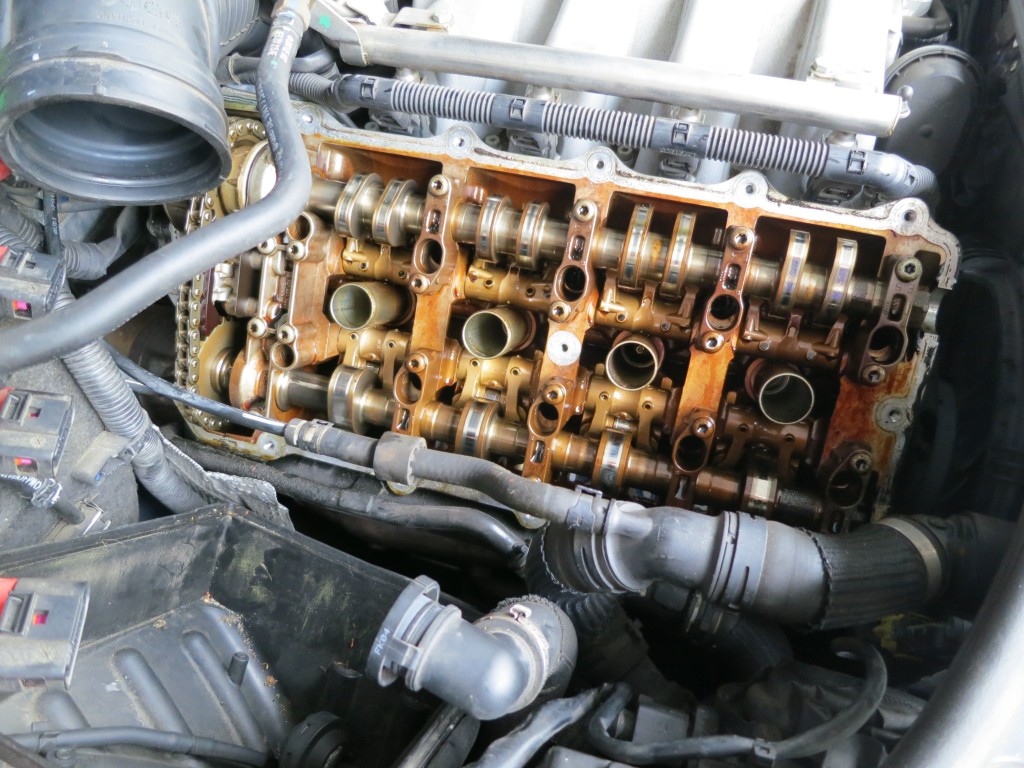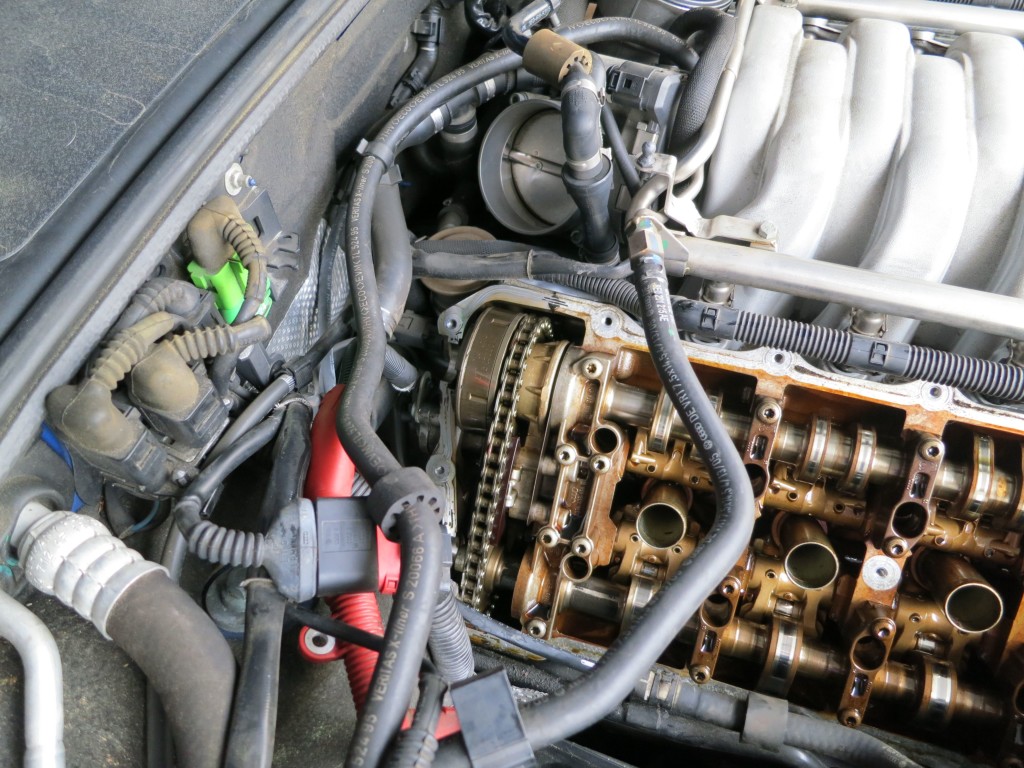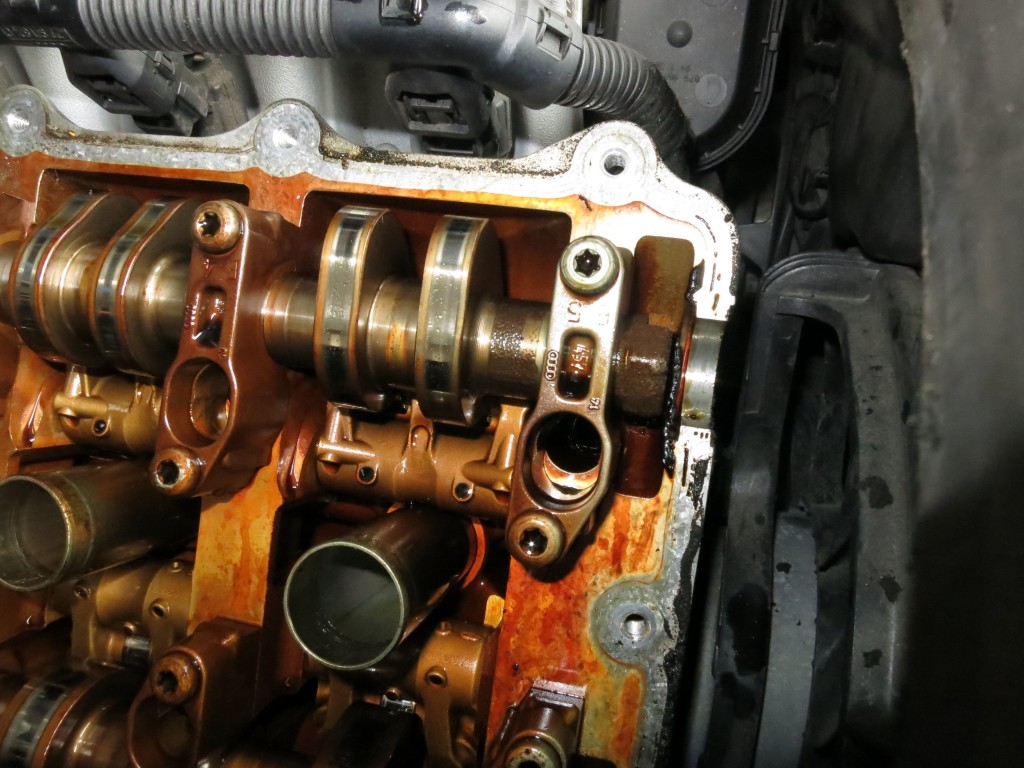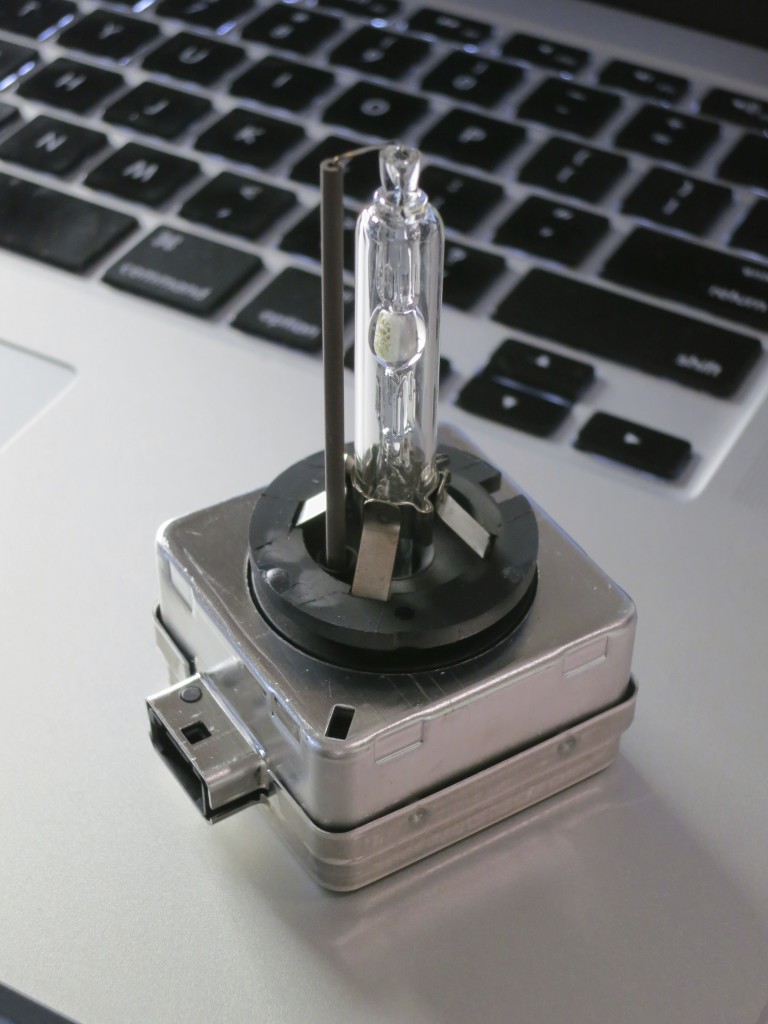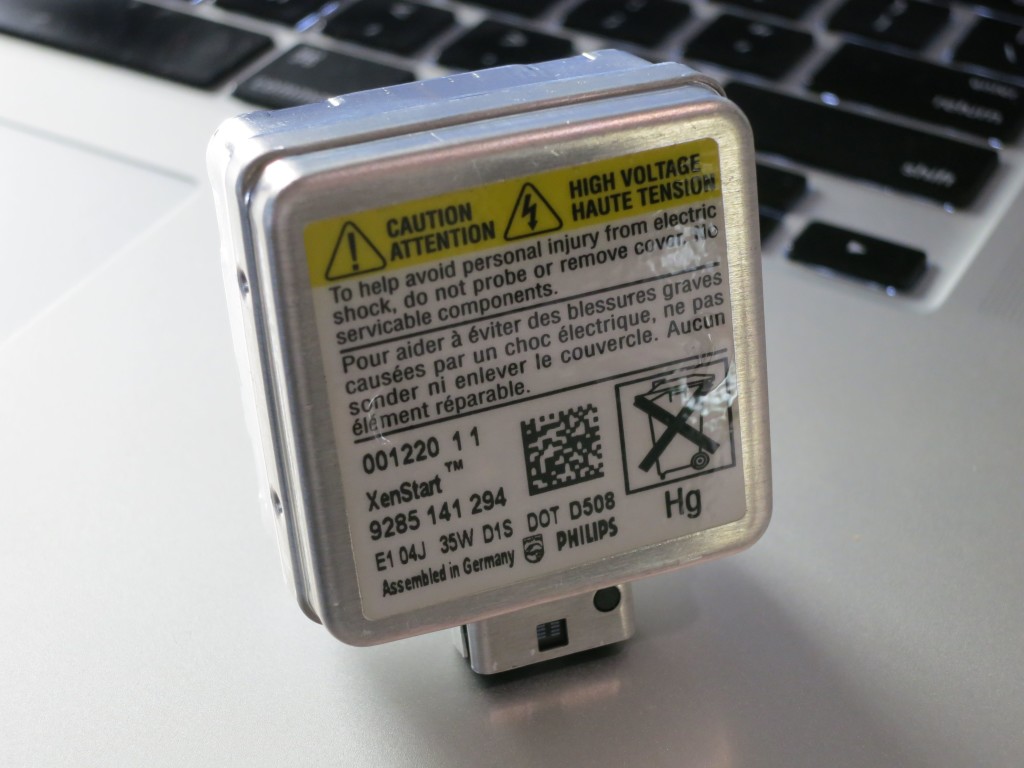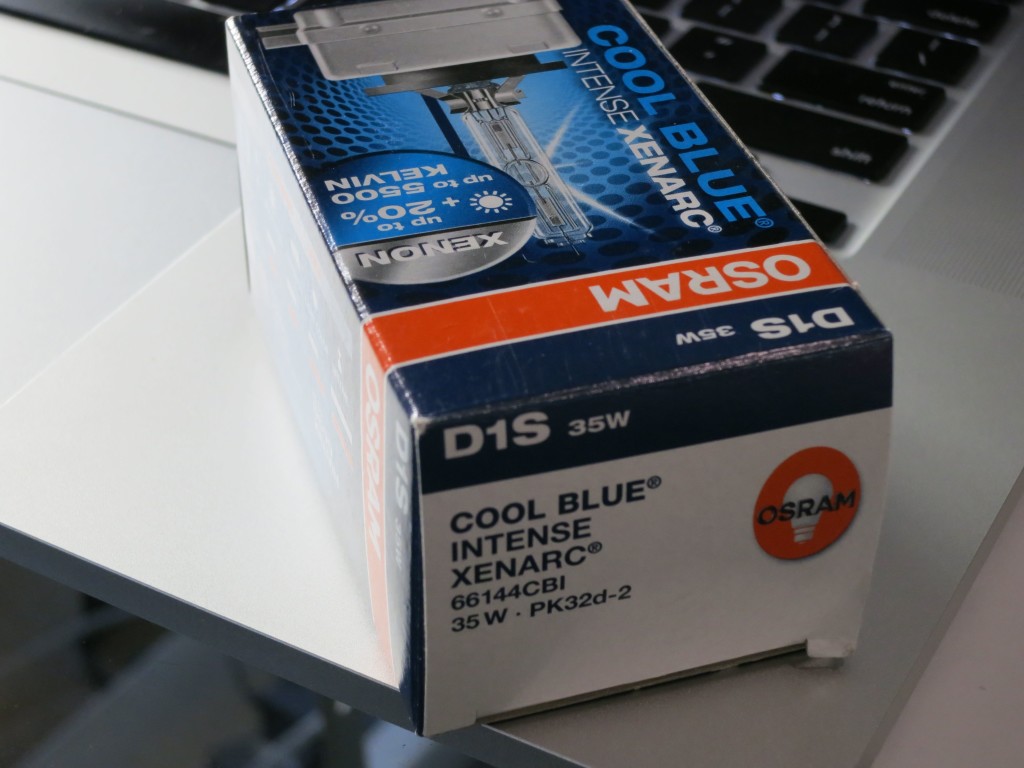Last time I had my S4 in for service (75k, so including ribbed belt replacement) the dealer pointed out that I had some oil leaking from the valve covers. The service advisor (working on a commission basis) said they recommended that I replace the valve covers along with the gaskets, at $660 per for the composite valve covers. He said no way to check existing covers for warpage (I assumed because they were a funny shape) and said they had better outcomes by replacing covers when they did gaskets. In absence of a AOA recommendation to do this I took a pass, did a little homework, and decided to replace the gaskets myself.
Here are the pictures the service advisor sent me showing the leaking valve covers, taken while the bumper was in the service position to change the ribbed belt (not sure I see anything here other than a dirty engine, but I suppose there is some oily stuff that presumably came from the valve covers):

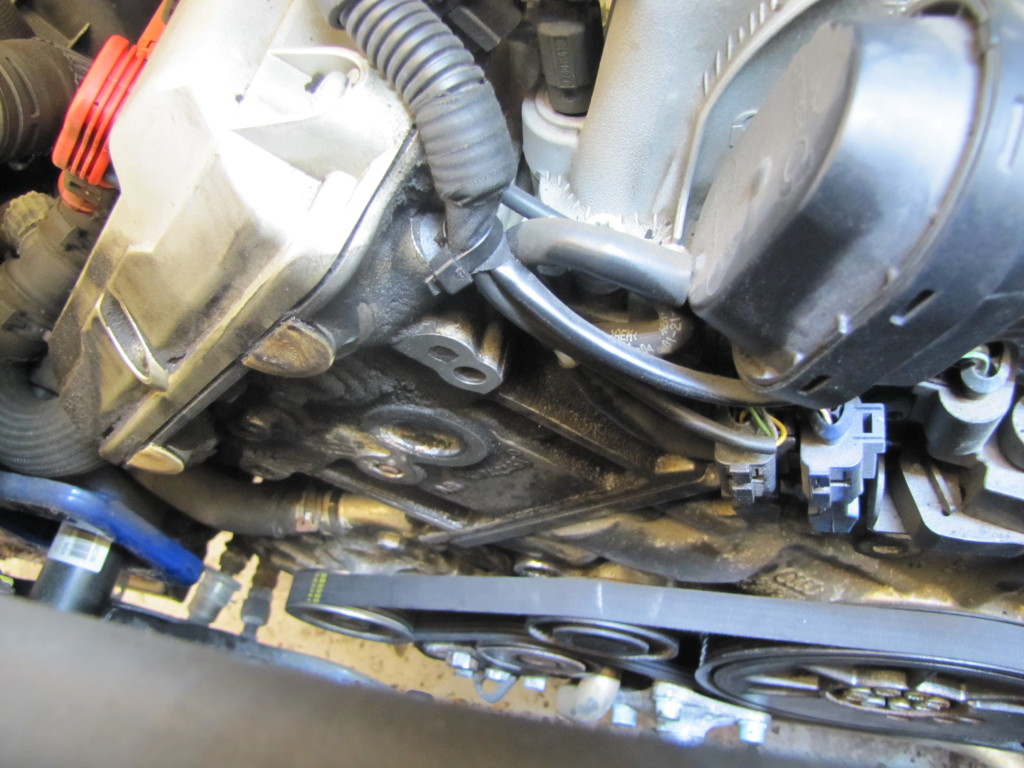
I ordered gaskets from genuineaudiparts.com, site is a little confusing, gaskets were 077198025B (passenger side), 077198025C (driver side), and I also ordered high temp RTV, D176501A1. Not sure who exactly made the parts but they were clearly OEM, made in Germany and packaged in VW group boxes. $48 for each gasket, I think the dealership wanted something over $90.
There is an excellent DIY by Joey Cuccaro on this here, and I also pulled down the erWin manual, pages 186-190 of this guy. Not going to redo any of the good work Joey did here, just going to add the things I think are worth adding.
Figured I would start with the easier (driver’s) side first.
I should have popped the cap of the coolant reservoir before taking the overflow hose off, because when I did there was some pressure and some coolant squirted out. No biggie, but next time. Also, to move the coolant reservoir tilt the front end up a bit and pop the tabs in the back out by giving the tank a rap or two. Here are shots of the tank tabs and the brackets they fit in:

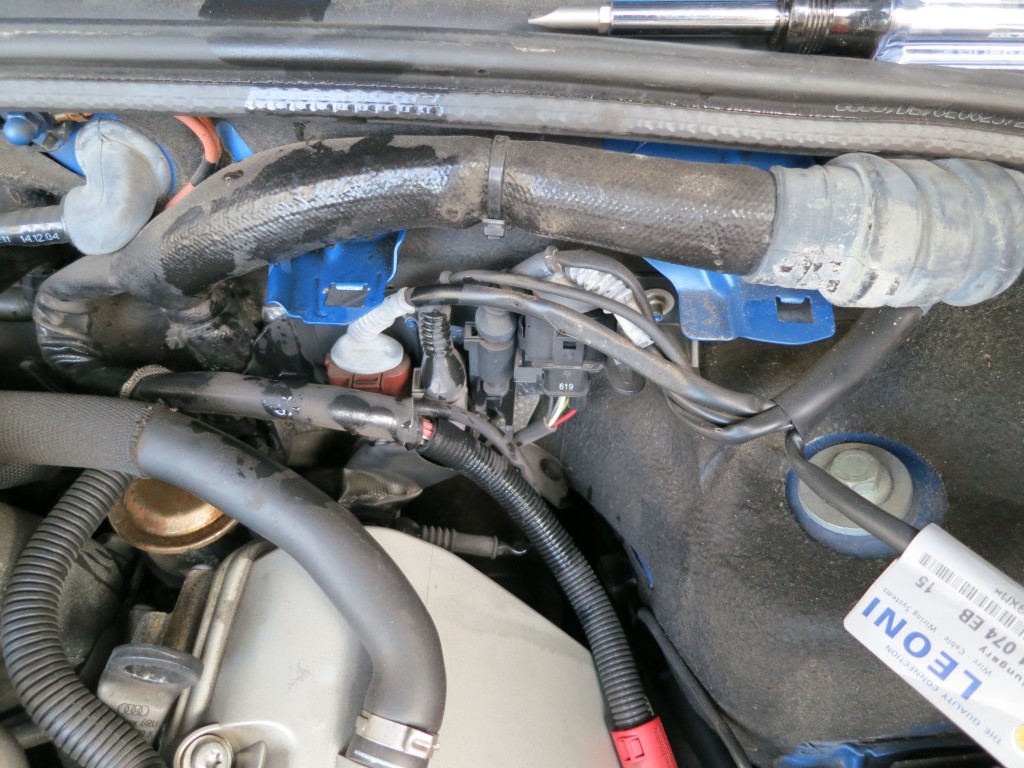
The erWin manual suggest removing a bolt holding the oil dipstick tube in place. I don’t know how you get at that bolt without taking more of the car apart, I couldn’t do it. But with a long T30 bit I could pretty much get at the bolt behind the dipstick tube:
 I didn’t have any trouble loosening the bolts (actually one of them was a little loose already, maybe I should have tried re-torquing everything before taking this on). Don’t worry about them falling out, they are held in place by some combination of washers and the gasket. No problem getting at the back lower bolt if you have the tools Joey recommends. Pretty soon I had this!
I didn’t have any trouble loosening the bolts (actually one of them was a little loose already, maybe I should have tried re-torquing everything before taking this on). Don’t worry about them falling out, they are held in place by some combination of washers and the gasket. No problem getting at the back lower bolt if you have the tools Joey recommends. Pretty soon I had this!

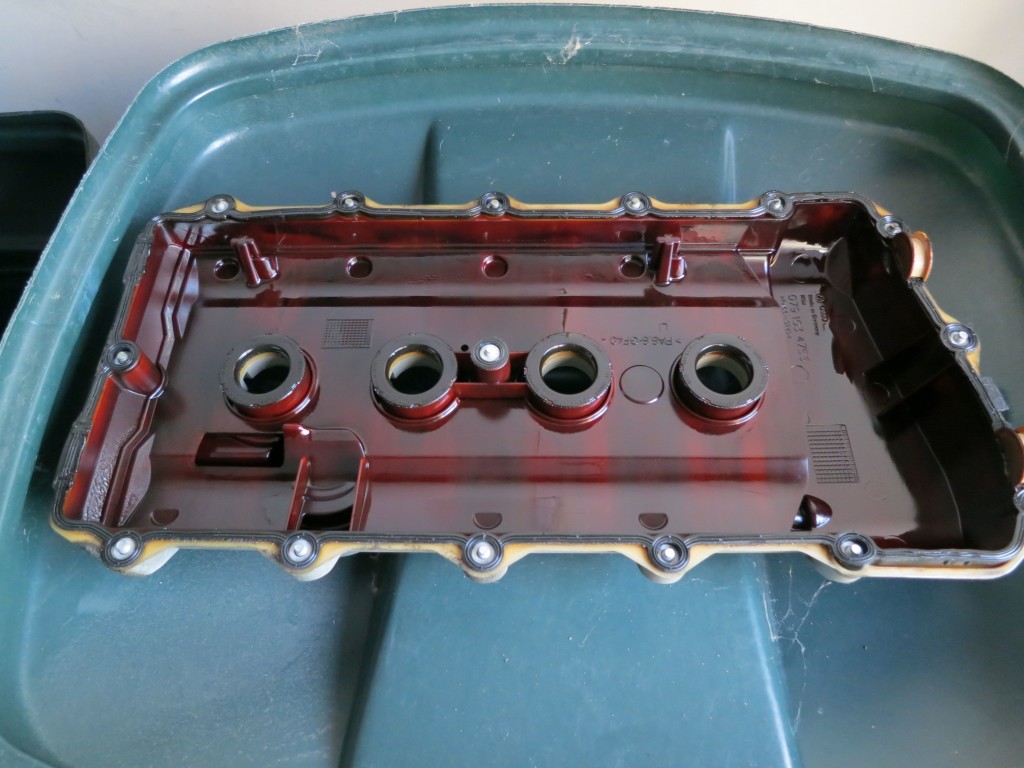
The half moons on the back edge came off with the cover, and the ones in the front stayed on the engine. I dropped one of the front ones where it was out of reach and poked it down so it would not get in the ribbed belt, hopefully it made it to the belly pan and fell out. So maybe be a little careful about the half moons. Factory had clearly used some RTV around the corners and the half moons, which I cleaned up as part of the surface prep. The old gasket seemed like it was in very good shape, plenty elastic, didn’t look smushed anywhere, etc. Back to my thought on re-torquing bolts before taking this on.
It was hard getting the coil pack seals off the cover. I tried to push them off from above, but most of the work was done with pliers, levering them off from inside the cover, they eventually popped off after applying quite a bit of pressure.
I decided not to use RTV for the new gaskets, which are T-shaped and fit very nicely into the valve covers. I think RTVing the corners might be from flat gaskets where holding the gasket in place is an issue. I don’t think these gaskets are going anywhere, and the erWin manual says nothing about using RTV. I did coat the half moons lightly with oil.
I torqued the bolts down using the pattern in the erWin manual, clockwise from top left it is 15, 13, 6, 4, 9, 11, 2, 12, 7, 5, 8, 10, 14, 3, and the center bolt is 1. Manual says 10 Nm, but for a number of the bolts it is hard to get at them and I don’t know how you would even hook up a torque wrench. Joey suggests a quarter turn after snug, but maybe my snug is snugger than Joey’s, because I didn’t want to go much past 1/8th of a turn past snug, and I checked a couple of bolts with a torque wrench to make sure I was in the right zip code. Firm with a short 1/4 drive handle.
A couple of the coil packs had a little oil on the end, maybe I should have peered down into the spark plug recesses to see if there was something bad going on there. But engine is running fine and I pull codes with Ross-Tech’s VCDS every once in awhile. Hopefully no big deal.
Whole thing took me three hours, but I work slowly/carefully, take breaks, look around, etc. I bet I could bang it out in less than two hours next time. We’ll see how the passenger side goes next weekend …
